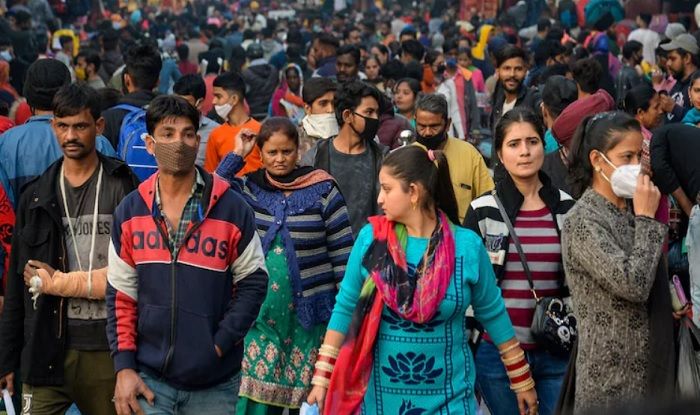Third Wave of Corona: As coronavirus cases continue to decline three weeks after Diwali, it seems the worst of the Covid crisis may be over, experts believed. However, they advised people to exercise utmost caution and vigilance as there are always imponderables, including the possibility of a new variant and the onset of winter in large parts of the country.
For the unversed, the daily rise in new coronavirus infections has been below 20,000 for 46 straight days and less than 50,000 daily new cases have been reported for 149 consecutive days now. In the last 24 hours, India logged 7,579 new coronavirus infections, the lowest in 543 days, taking the country’s total tally of COVID-19 cases to 3,45,26,480.
So, Is the worst of the Covid Crisis Behind India?
Speaking to news agency PTI, Gautam Menon, professor, Departments of Physics and Biology, Ashoka University, in Sonepat elaborated that corona cases may rise, perhaps across late December-February, but the impact will be milder than what India experienced in the second wave when thousands died and many thousands more were hospitalised. “What it suggests is that the impact of the second wave, where a substantial fraction of Indians were infected, continues to manifest itself”, he said, adding that a stepped-up vaccination campaign has meant that more people are protected against severe disease, hospitalisation, and death
Echoing similar remarks, virologist Anurag Agrawal said that the low number of cases can be attributed to a high fraction of the population being infected by the Delta variant during the second wave, followed by most adults having received at least one vaccine dose further boosting the immune response. “Serosurveys have shown that the majority of the population is likely to have been infected”, Agrawal, director of the CSIR-Institute of Genomics and Integrative Biology, New Delhi, told the news agency.
Immunologist Vineeta Bal asserted that it is a well-established fact that complete vaccination as well as previous exposure with SARS-CoV2, the virus that causes COVID-19, lead to a significant decrease in the severity of the disease.
Small Outbreaks or Slow Increase in Cases Likely
Northeastern states, especially Mizoram, are still showing a continuing increase in the number of cases. “Although the cases started rising in the northeast much later than the rest of the country, this shows that there might be small outbreaks or slow increase in cases in pockets or areas where immunisation has been poor and rate of infections over the past year or so was low”, Bal, from Pune’s Indian Institute of Science Education and Research, told PTI.
Vigilance needs to continue, search for outbreaks needs to be in place along with necessary isolation and treatment facilities, she cautioned.
‘Rising Cases in Europe, North America A Matter of Concern’
The increasing number of cases in Europe and North America over the last month has been a matter of concern. “For the last two years, India seems to have followed Europe in the Covid spike but many scientists feel that may not be the case this time and a third wave even if it does happen will be milder. If there was a spike looming in our future, we should have detected signs of it already, said Gautam Menon.
The World Health Organization has also said that it is “very worried” as Covid cases continue to spike in Europe. According to regional director Dr. Hans Kluge, the risk is due to low mask use and vaccine hesitancy, winter season, and dominance of the more transmissible Delta variant. Several European countries have loosened masking requirements, citing vaccine efficacy.
Dr. Kluge said 500,000 more deaths could be recorded by March unless urgent action is taken, the BBC reported. The warning comes as several nations report record-high infection rates and introduce full and partial lockdowns. He said that an increase in mask wearing could immediately help.
A Series of Wrong Predictions
Several epidemiologists had predicted a third wave peaking in October and November because of large gatherings in the festive season, which includes Durga Puja and Diwali. In July 2021, the Indian Council of Medical Research (ICMR) had projected that the third wave may hit India by the end of August. Prior to ICMR, the Indian Medical Association had said the third wave is definitely coming to hit India.
An expert panel, set up by an institute under the Ministry of Home Affairs (MHA), had predicted a third wave of COVID-19 hitting the country anytime between September and October and suggested significantly ramping up the vaccination pace.
In June, All India Institute of Medical Sciences (AIIMS) chief Dr. Randeep Guleria had predicted that if Covid-appropriate behaviour is not followed and crowding not prevented, the next wave of the viral infection can strike the country in the next six to eight weeks.
But the much-feared spike didn’t happen, fortunately.
